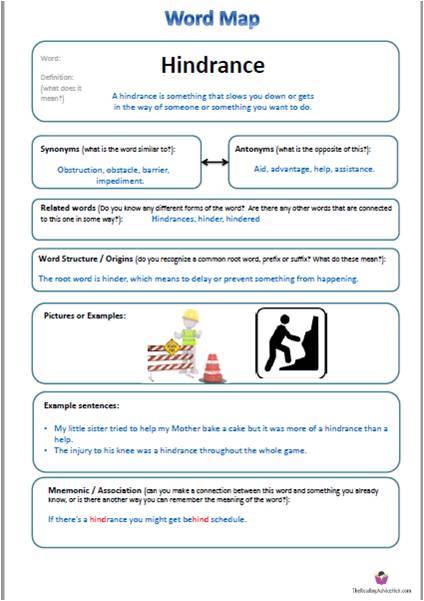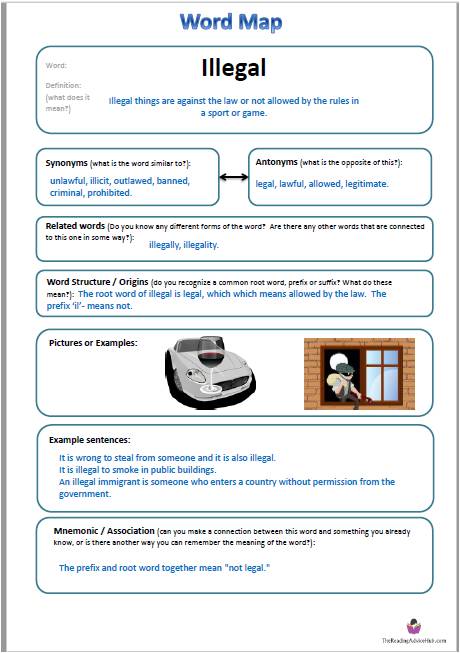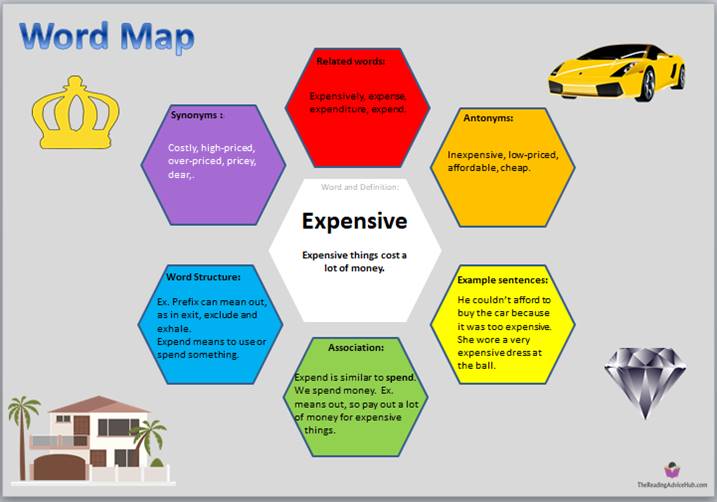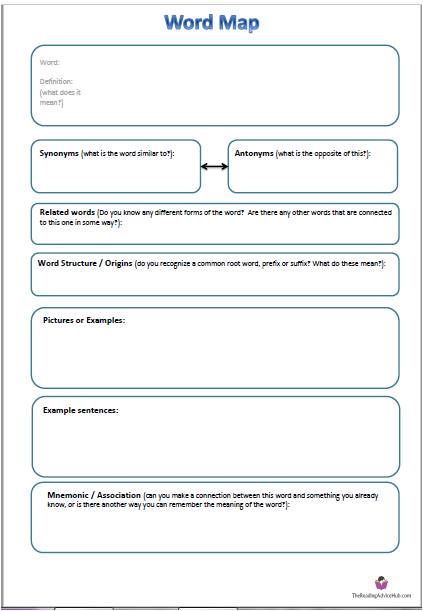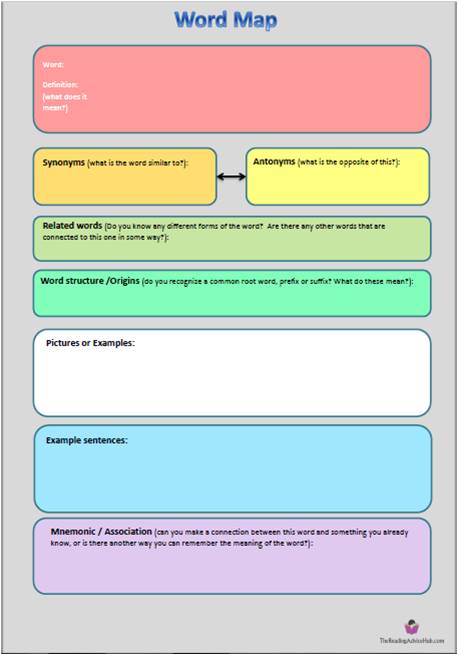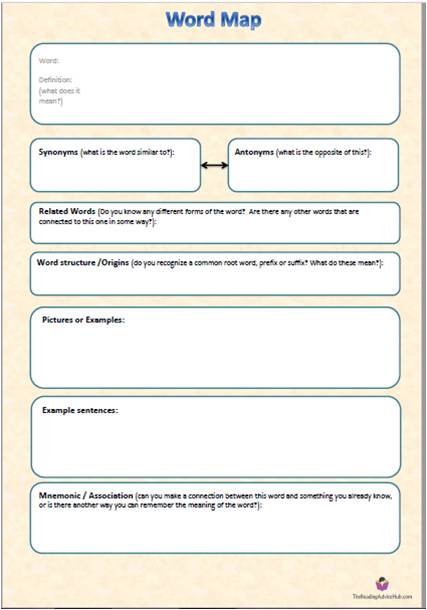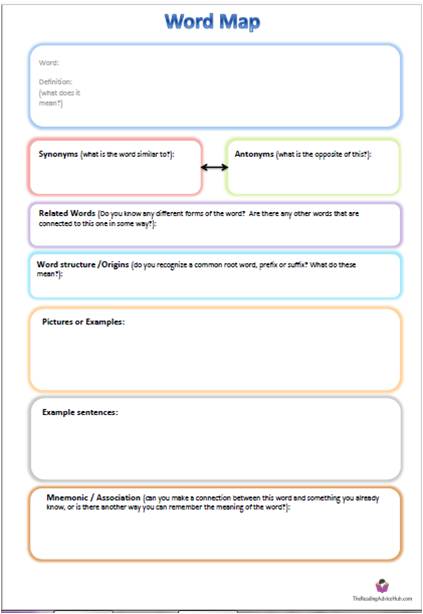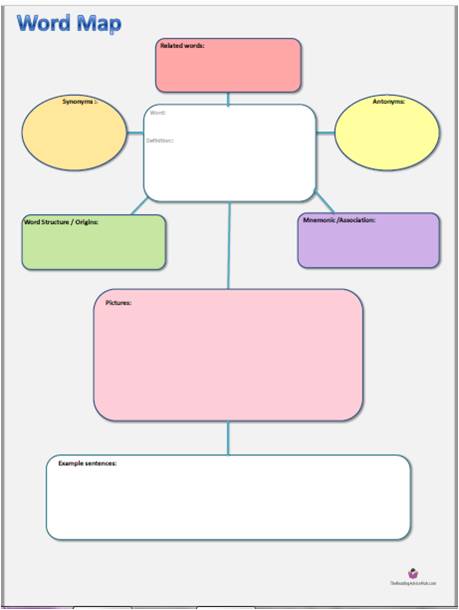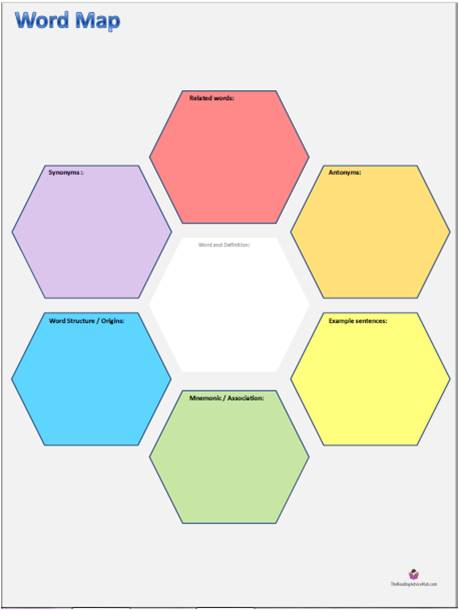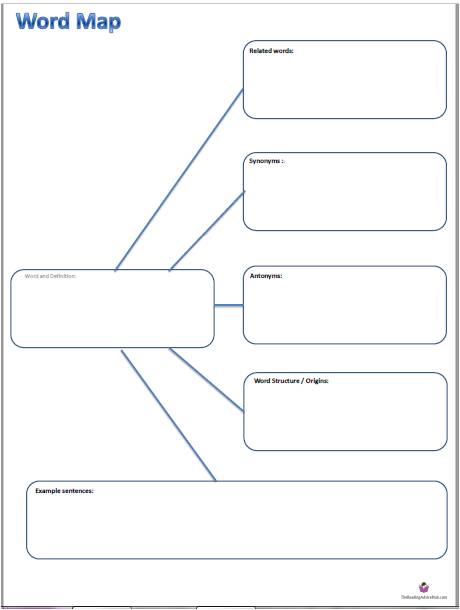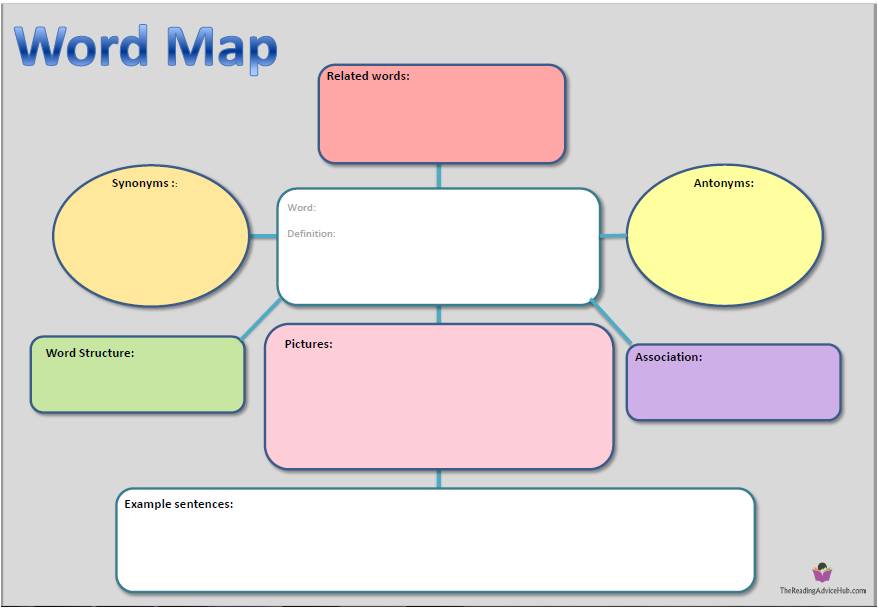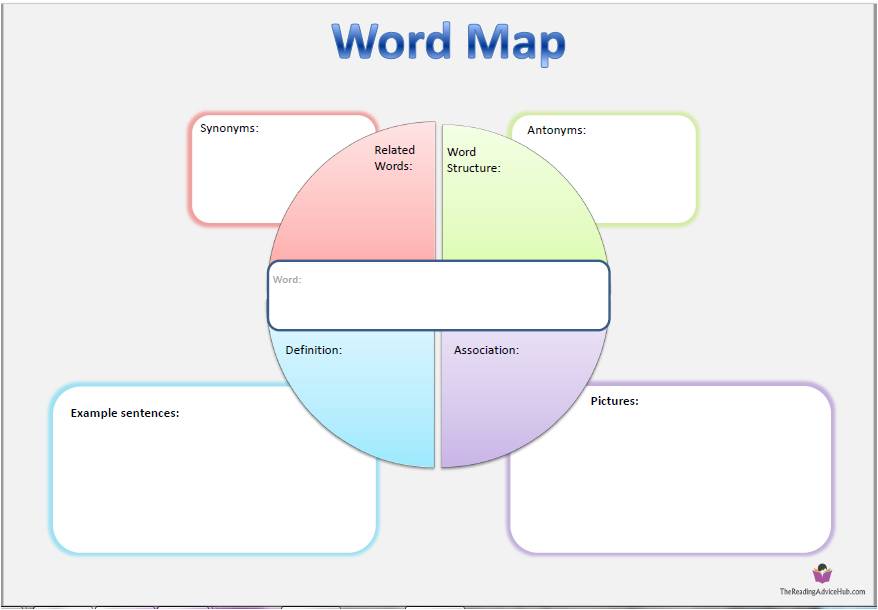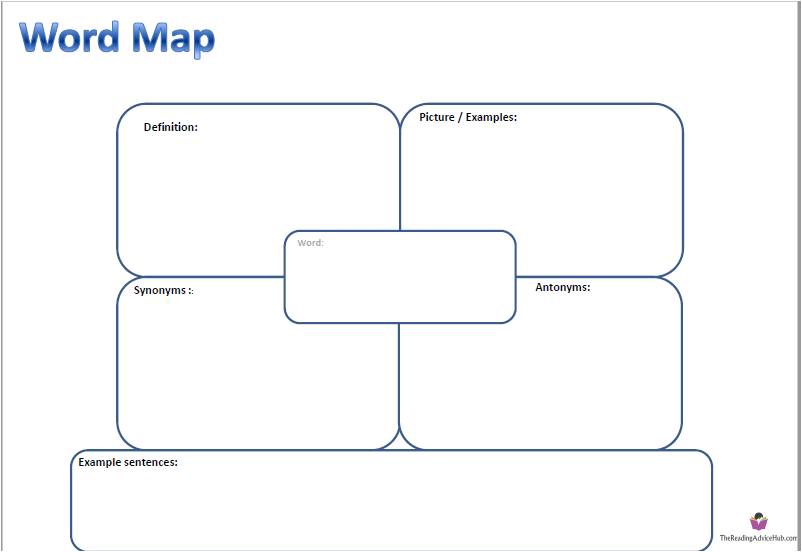In this article, we explain how you can improve children’s vocabulary using word maps as graphic organizers. We’ve included a variety examples and blank word map templates – all free for you to download.
You might also find it useful to read our article, ‘How Can I Improve My Child’s Vocabulary?‘, where we discuss other important aspects of vocabulary development.
Disclaimer: We support the upkeep of this site with advertisements and affiliate links. We may earn a small commission if you click on the ads or links or make a purchase. There is no additional cost to you if you choose to do this.
Contents:
Introduction
There are a variety of different styles of word maps and a number of different terms are used to describe them. For example, they are sometimes called ‘vocabulary maps’, ‘semantic maps’ or ‘concept of definition maps’.
However, no matter what term is used to describe them, all word maps serve a similar purpose. They’re all designed to help children see the relationships between words, knowledge and concepts by organising the information in a visual framework.
Visual representations of information are know as graphic organisers in education circles and Dr Robert Marzano found that these strategies were particularly effective when he compiled his meta-analysis of classroom instruction techniques.1
Combining linguistic information with non-linguistic representations (imagery) utilises what psychologists call the ‘dual coding theory’. According to Marzano and others, the more we use both systems of representation, the better we are able to understand and recall knowledge. Essentially, dual coding gives us two ways of processing and remembering information rather than just one.
Types of Word Maps
Word maps can be constructed in different ways – some are structured as simple tables, whereas others have more complex diagrammatic or pictorial forms. And there is also some variation in the details included in different styles of word maps.
Specialist software can be purchased to construct graphic organisers, but other products that are widely available, such as Microsoft Word or PowerPoint, can also be used to make templates. For example, the SmartArt function in PowerPoint and Word provides a wide choice of graphics, including the following examples:
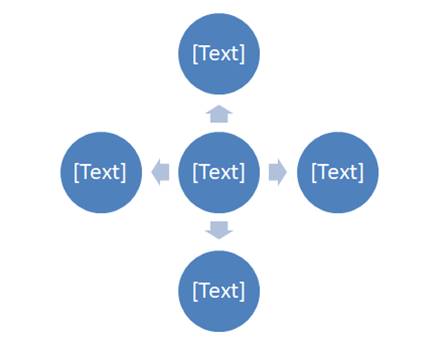
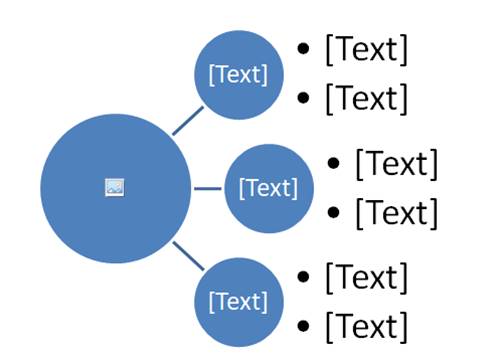
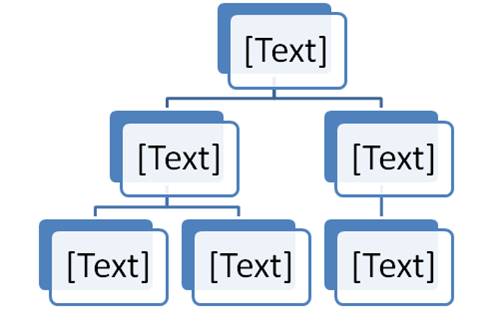

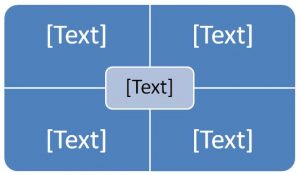
You can also design your own style of word map templates using tables, shapes or text boxes in Word or PowerPoint, or you can use or adapt some of the blank word map templates we’ve included in this article.
No single style of diagram or table has been shown to be more effective than others. The important thing is that the word map should help to structure and organize the information in a meaningful way.
And it’s not essential or even important to use graphics from computer software. You can use paper templates or simply hand-draw the diagrams on blank paper.
In fact, there may be some advantages in getting your child to handwrite the information rather than type it. That’s because students who take notes by hand seem to learn conceptual information better over the long-term than students who write their notes on laptops.2
What Should Be Included in a Word Map?
The simplest word maps usually include a definition, a synonym and a sentence containing the word. The short videos below show some relatively simple variations:
More elaborate word maps might contain an assortment of the components listed below:
- Definition – this could be copied straight from a regular dictionary, or it might be a simplified version that’s more accessible to children. We’ve included some links to child-friendly sources of information in this article. It’s also important to consider alternative definitions if the word has more than one meaning.
- Synonyms – see if you can prompt your child to think of some synonyms. Ask them, ‘what is this similar to?’ Or, ‘what other words do you know that mean the same thing as this word?’ Use a thesaurus to find more examples.
- Antonyms – ask your child, ‘what is the opposite of this?’
- Word structure/origins – identifying common root words, prefixes or suffixes can help children understand the meaning of words (and this can also help with spelling). See below for links that can help you find word origins.
- Related Words – recognising related words can also improve a child’s understanding and widen their vocabulary.
For example, if the new vocabulary word was the adjective ‘expensive’, you might also include the adverb ‘expensively’, the nouns ‘expense’, ‘expenses’ and ‘expenditure’ and the verbs ‘expend’ and ‘spend’.
You don’t need to explain the correct grammatical terminology for each word if your child hasn’t studied much grammar in school yet. Just thinking about related words and how they might be used in different sentences can still be beneficial.
For some technical words, it can help to look beyond grammatical variations. For example, if you were introducing the word ‘soluble’ in a scientific context, it would also be helpful to consider the related words ‘solute’, ‘solvent’ and ‘solution’. All of these words start with ‘sol’, and probably originate from the Latin word ‘solvere’ which means ‘to loosen’ or ‘unfasten’.
You could discuss how molecules (or ions), which are stuck together in the solid form (the solute), work loose when they dissolve in a solvent to form a solution. Your child might notice that the word dissolve also contains ‘sol’.
- Example sentence(s) – if your child first encountered the new word in a book, you could copy the sentence from the book as one example and then help help them to make up a sentence of their own. You might want to help them construct more than one sentence if the word has more than one meaning so they can see how it’s used in different contexts.
- Pictures or examples – representing the meaning of words with concrete examples or images can improve a child’s understanding and make the information more memorable.
- Mnemonic / association – this might not be possible for every word, but see if there is a way of linking the word to something your child already knows. Considering the word structure and origins can sometimes help with this step.
The different sections on a word map could vary for different types of word. For example, you might choose some different categories for nouns than you would for verbs or adjectives.
The complexity of the word might also influence the amount of detail you include in a word map, but it’s probably better to put in a bit more information than to have too little…
Our brain is made up of an enormous network of neurons, and learning something new causes the brain to build connections between these neurons.
Cognitive neuroscientists tell us the more meaningful connections to prior knowledge we can make, the better will be our understanding and our ability to recall the information. 3,4
In the very simplified model below, the dots represent neurons (brain cells) and the lines represent the connections between neurons (synapses).
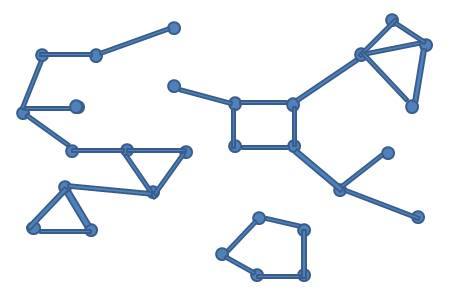
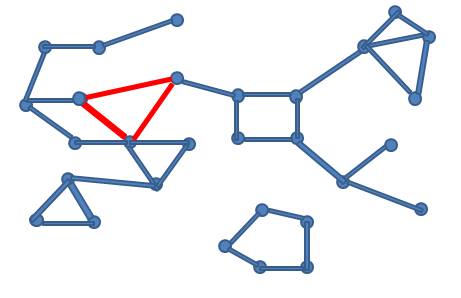
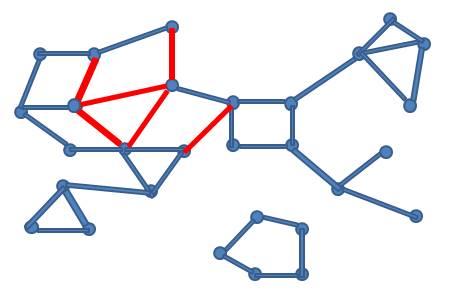
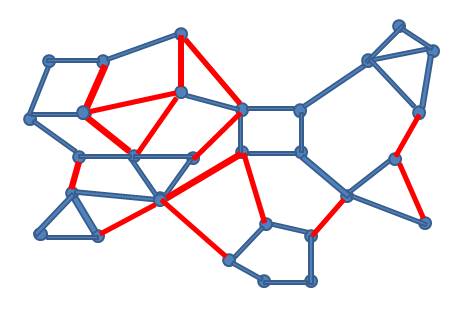
How to Teach Word Mapping
Before you get your child to complete a word map independently, it can be helpful to explain and model the process with them first.
Your child will understand the process better if you teach them using real examples, rather than just explaining the process in an abstract way. And it’s better for them to see a variety of examples instead of just one or two.
We’ve included several examples below, most of which are in a tabular form. Although tables aren’t as elaborate as some alternatives, they’re still a useful way of organising information in a logical order.
Even if you intend to construct a more diagrammatic style of word map, it can sometimes be helpful to compile the information in a table first.
Example Word Maps
You might find the links below helpful when you are compiling the information for word maps. Explain to your child that using information from a variety of sources will give them a more thorough understanding of a word.
Useful Links:
Vocabulary.com We mentioned this site in our article, ‘How Can I Improve My Child’s Vocabulary?’ As well as providing child-friendly definitions, it uses sophisticated computer algorithms to help children learn new words and can be played as a game. They ask questions about words in different contexts and also provide information about word structure for some words.
The Kids.Wordsmyth dictionary is a useful resource for finding simple definitions and related words.
Merriam-Webster’s Learner’s dictionary is designed for students with another fist language who are learning English. However, the definitions are also useful for children because they are generally shorter and use simpler language.
Thesaurus.com is great for synonyms and antonyms. It claims to be the world’s largest free online thesaurus.
Dictionary.com is useful for finding out about word structure because it provides information on word origins.
The Thinkmap Visual Thesaurus is an interactive dictionary and thesaurus which creates word maps of related words.
VISUWORDS™ is another interactive online graphical dictionary that shows creative associations between words.
IXL Learning cover 8000 skills in 5 subjects including phonics and reading comprehension. You can click on the following link to access a 7-day free trial if you live in the US.
If you live outside of the US, you can get 20% off a month’s subscription if you click on the ad. below:
Blank Word Map Templates
Download the templates as PowerPoint slides if you want to edit them in some way. Download them as pdf documents if you want to use them as they are.
Further Information…
See our article How Can I Improve My Child’s Vocabulary? for more vocabulary strategies and some vocabulary word lists.
Reading Rockets have an informative article about word maps with more free examples and templates: http://www.readingrockets.org/strategies/word_maps
The readwritethink website has a detailed lesson plan for using word maps in the classroom.
References
- Marzano, R. (2001), Classroom Instruction that Works, ASCD.
Take Notes by Hand for Better Long-Term Comprehension, Association for Psychological Research (April 2014): http://www.psychologicalscience.org/index.php/news/releases/take-notes-by-hand-for-better-long-term-comprehension.html
Learning in the brain: https://sites.google.com/view/efratfurst/learning-in-the-brain
Willingham, D. (2006), How Knowledge Helps, American Educator: https://www.aft.org/periodical/american-educator/spring-2006/how-knowledge-helps
